Our last piece got a few high quality comments. Grooms pointed out that the land speed record holding car had metal wheels which served its niche purpose, and I updated the piece as a result. HorseGirl Respecter chimed in with something I hadn’t thought of myself.
There is one mode of transportation that has zero rolling resistance and the only friction it faces is wind resistance. They have great acceleration and deceleration for their size, weight and speed. So because of that they must be more fuel efficient than trains and especially those smelly old trucks?
He gets the numbers a bit wrong for his calculation of the fuel economy of his chosen method of transportation. But what kind of vehicle could he possibly be talking about that doesn’t have any rolling resistance? Surely this vehicle must be the pinnacle of fuel economy!

C-5 Super Galaxy
Above we see the C-5M Super Galaxy strategic transport airplane. It has a max fuel capacity of 332k lbs, a max cargo capacity of 284k lbs, and a max take-off weight of 840k lbs. I’ve seen range numbers quoted as 5,500 miles at 120k lbs, and 2,600 miles at the full 284k lbs max cargo capacity.
Assuming the tanks are bone dry at the end, those two numbers give us roughly the same (ton-mile)/(lbs of fuel) ratio of almost exactly 1,000 ton-miles/lbs of fuel consumed. The marketing number that CSX – the railroad corp that the urbanite Alan Fisher uncritically repeats – gave us for their ton-mile/fuel consumption rate was 492 ton-miles/gallon. To convert from lbs to gallons we can divide by about 6.7, assuming Jet A fuel. That gives us a result of about 150 ton-miles/gallon of fuel consumed for the Super Galaxy strategic airlifter.
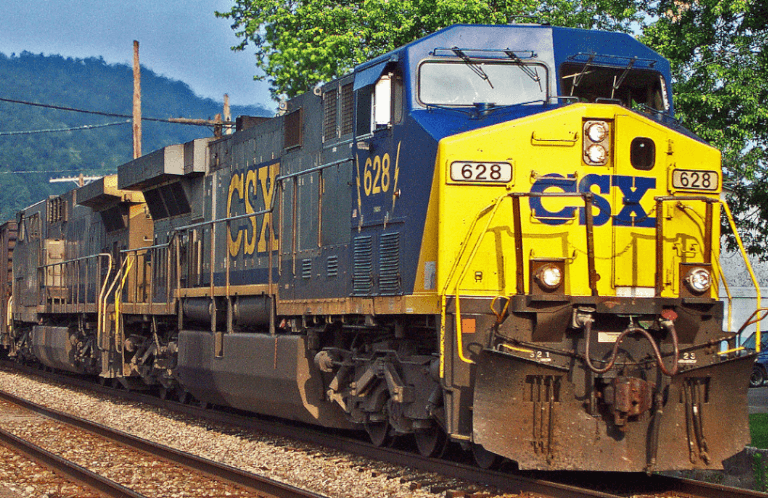
This is a little odd. Assuming the preposterous premise that CSX’s numbers are accurate, our airplane is only about one third as fuel efficient as CSX’s trains. They don’t have any rolling resistance to speak of, so how this be? What’s holocausting our fuel economy here?
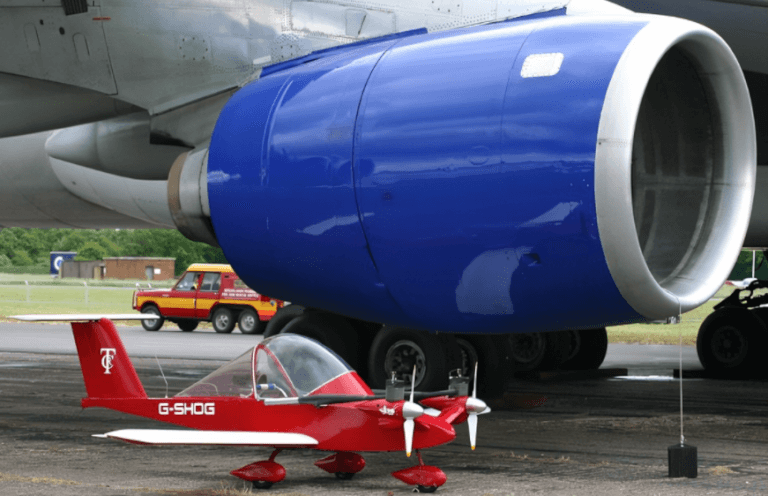
Using the same snarky and totally unserious argumentation of these types I could easily bloviate about how – since planes have no rolling resistance and can fly perfectly straight to their destinations – planes must be more fuel efficient. Then I could find some totally misleading numbers from Boeing that showed unrealistic fuel consumption rates to “prove” the total superiority of plane race.
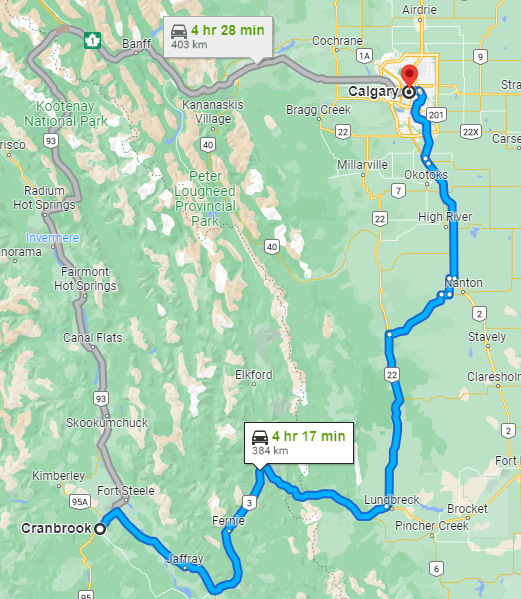
In fact, let me do that right now. Above you see that driving from Cranbrook, BC, to Calgary, Alberta, takes over four hours and 384 kilometers of driving.

In contrast, the flight takes less than an hour, and is only 210 kilometers. Even with CSX’s most flattering estimations a plane is only a third less fuel efficient than a train, therefore more fuel efficient than a truck. Then we factor in the plane only traveling half the distance, and they’re close to three times more fuel efficient.
No, we’re not factoring in the fact that trucks serve a different purpose, and take good from dispersed locations to dispersed destinations. There’s no such thing as the Partial Trip Problem. Therefore trucks are half as fuel efficient as cargo airplanes, while taking four times as long. Also, don’t pay any attention to me picking a route that must travel through the Rocky Mountains. That is pure coincidence, Goy.
Jaime, can we up that Alan Fisher quote again?
So, is the answer always trains? I don’t know for sure, but the numbers and the statistics sure seem to point that way.

Alan Fisher
Let’s fix that for our current situation.
So, is the answer always
trainsplanes? I don’t know for sure, but the numbers and the statistics sure seem to point that way.
The numbers don’t lie. Cargo planes are faster, and use less fuel. There is literally no reason to use trucks you goddamn cArBRaiNs.
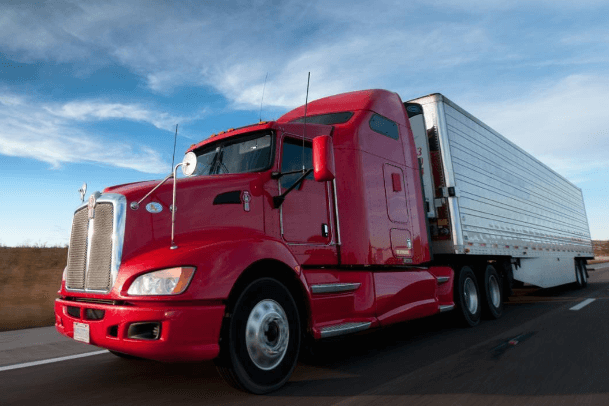
But hold on a second, because the train fetishists are about to get transport cucked hard. Below is the Canada Pacific rail route from Cranbrook to Calgary.
Absolute YIKES. Do you see how twisty and inefficient that line is? TERRIBLE. Trains will always have to cross vastly more distance than planes. They are even worse than trucks in this respect, due to their lack of grip, which means that they can’t go up mild hills. As a result, they have to take extremely meandering paths everywhere that they go. In the grand tradition of internet rigour, I’m going to squint at the map a little, and then conclude that the distances they need to travel will be, on average, twice as far as the distances that planes have to travel, sometimes more.
Adding on to this, we have the dubiousness of CSX’s numbers. Since I’m not a traffic troon, I don’t take the rail corporations numbers for their ton-mile/fuel consumption at face value. I’ll be generous, and say that they are exaggerating their fuel economy by at least 50%, making them only twice as fuel efficient as our cargo planes.
So if planes are half as fuel efficient, but only have to fly half as far then that means that… OH MY GAWD! Cargo planes are actually just as fuel efficient as trains!

But wait, it gets worse. Those CSX numbers not only don’t factor in the logistics train, they don’t even factor in the fuel consumption of maintenance vehicles. Planes don’t have to maintain the air that they fly through, but railroads absolutely have to maintain the rails. And they need to do so for the entire length of the rails. Oh and they also need to manufacture new rails and truck them out there, which takes lots of fuel.
Don’t ask me to quantify any of this. Quantifying things, outside of uncritically repeating rail corporation marketing, is for cARbRaiNs. But I think it’s reasonable to assume that a lot of fuel is consumed doing this. Therefore, since trains were already only on par with airplanes in terms of fuel consumption, they must now be much worse.
But it gets even worse for the trainbrains. Cargo planes have cruise speeds of around 900 kmph. Freight trains can theoretically go around 150 kmph, but their average speeds, according to the Federal Railroad Administration, is just 20 mph, or about 36 kmph. That means that freight trains travel at literally one twenty fifth the speed of cargo planes. But remember, they also have to go twice as far. This means they effectively travel at one fiftieth the speed, on average.
You might be about to step in and point out that I am comparing real-world average speeds for trains with the fastest cargo planes cruise speeds. My response is to snarkily adopt a tone of midwit pseudo-intellectualism and then ignore this, you fucking train cuck. I will instead very precisely calculate some numbers that don’t really have any relationship to reality to prove that trains don’t just have no business existing, but are holocausting the productivity of our dear economic zone that we all would happily die for.

C5-M’s, again.
What is the purpose of freight transportation? It is to get the goods where they are needed. In the case of industry, the faster we can ship goods around, the more productive we can be. Therefore, since cargo planes are 50 times faster than trains, we can boost GDP by 50 times just by destroying trains and using cargo planes for everything. Therefore Canada can have its GDP increased to five times America’s overnight.
We can do all this right now, just by putting ol’ Thomas the Tank Engine on a railway line straight into an oven.

Let’s bring up that Alan Fisher quote again.
So, is the answer
always trainsto shove Thomas the tank engine into an insecticide filled maintenance room and then turn his carcass into lampshades, bars of train grease soap, and art deco projects? I don’t know for sure, but the numbers and the statistics sure seem to point that way.

Your brain might be a bit baffled right now. After all, isn’t everything I wrote a total non-sequitur? Isn’t speed of delivery only rarely a relevant metric when it comes to freight? Isn’t total throughput much more important in most cases? Aren’t there a million other practical details that I left out?
Absolutely not. The problem is that you, a dumb dumb, forgot about induced demand. As a refresher, this is the totally reality based claim that there is infinite demand for car transportation. Occasionally this is extended to passenger rail and bussing. But why not extend this to fast logistics delivered by air? It would be a failure of imagination not to.
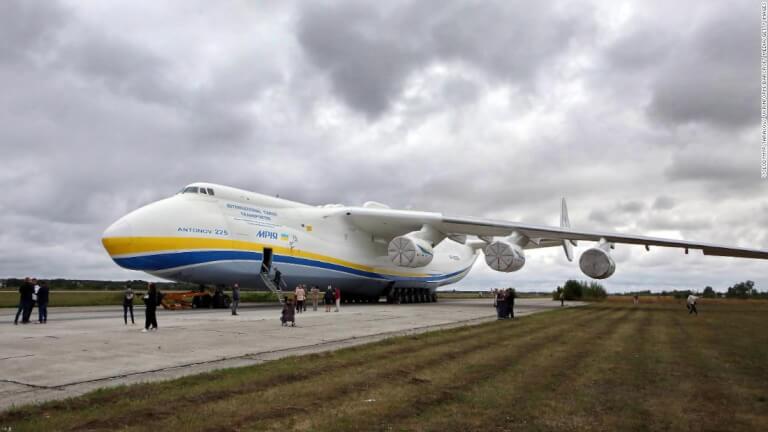
If we simply built 1,000 times more cargo airplanes than we currently have, we would induce the demand for their transportation capabilities at 1,000 times more than currently exists. Remember, there is infinite demand for air freight, and no such thing as a catastrophic waste of societies resources.
We would definitely not be having planes taking off and landing with nothing in them. Just like we definitely never have buses that are completely empty, yet praised by Urbanite Dipshits.

Ultimately, it’s simple. Planes don’t have any rolling resistance and can fly straight to their destination. Stop being a trainbrain and start understanding that calling for the complete holocausting of trains is totally justified based on a hypersimplified model of reality. We must now totally re-engineer society to fulfill my vision.
And if you need to go straight up and down, just use a helicopter. They also have no rolling resistance, and therefore must have great fuel economy.

TIL that helis ACKSHUALLY have great fuel economy, due to not having rolling resistance.
Wait a minute. Why am I leaving out the coolest form of transportation ever? TraInBrAInS would have you believe that zeppelins serve little to no useful purpose, but they have no rolling resistance, and are therefore extremely energy efficient.

To be clear, planes will always have mediocre fuel economy relative to trains for practical reasons. They need to generate at least 1G of lift to fly which puts serious constraints on their cargo. In reality, they need to generate even more, because the less angle of attack, the lower the induced drag. They need enough power to fly at speeds at least hitting the induced drag/parasite drag sweet spot. And there are practical limits to their takeoff and landing speeds and distances.
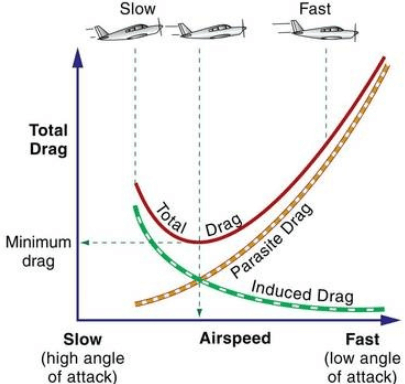
They also need enough structural strength to handle a few Gs of lift, if for no other reason than safety in turbulence while turning. All of this takes weight that must be stolen from the cargo or fuel. And don’t even get me started on helicopters, which need to produce their weight in lift, plus extra, at all time when flying.

Absolutely sick though. My favourite vehicles.
Trucks and trains have much less extreme weight budgets, since their weight needs to be supported only by the structure, not through lift. That’s not quite true when they’re going uphill of course, but their roads/rails are designed with that limitation in mind.
It is this practical advantage that allows them to have a lower fuel cost/mile ratio than planes in reality. It’s more efficient to have larger vehicles on a host of different metrics including fuel consumption, driver costs, and loading/unloading times. That’s why we have semi-trucks transferring 40,000 lbs of goods per trip, instead of a platoon of about 13 F-150’s transferring 3,000 lbs each.
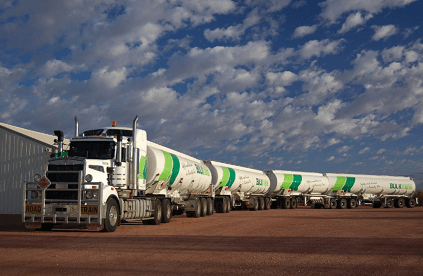
Within reason, the larger the vehicle, and the larger the towed cargo, the lower the costs. Some mining corporations stick a whole bunch of trailers on the back of their trucks for this very reason.
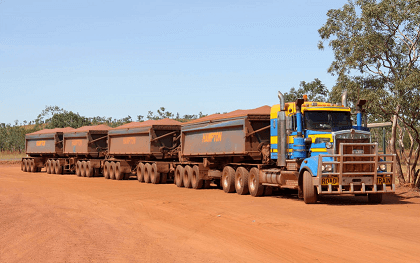
This can complicate the loading and unloading process, but for mining it’s not such a big deal.
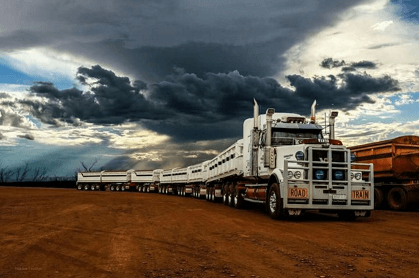
This one might be photoshopped.
Mines, and the industrial plants they serve, often have specialized equipment that loads and unloads the product, which means they don’t have to go through a tedious loading/unloading process. The same is true for real trains, which is another reason why they can’t just show up at warehouses with any kind of efficiency.

These road trains can get to quite large sizes. Although do note that the video thumbnail is an obvious photoshop.
The roads across the outback are straight and empty, perfect for monster vehicles.
Here there are few railroads, and only these trucks visit the remote mines. Valuable resources are carried by road train from the center of the country to the more populated cities on the coast.
…
Affectionately known as the centipede, it’s a 205 ton, 160 foot long rig.
 To put that into perspective, the max weight of the truck I drove got up to 40 tons including the cab, with a length of 65 feet that I don’t believe I was ever at. This vehicle is five times heavier. The exact cost savings in fuel, money, and whatever else are known only to the mining corporation.
To put that into perspective, the max weight of the truck I drove got up to 40 tons including the cab, with a length of 65 feet that I don’t believe I was ever at. This vehicle is five times heavier. The exact cost savings in fuel, money, and whatever else are known only to the mining corporation.
The mining company is so pleased with the performance of the centipede that they have built another one. Now there are two identical longest trucks in the world.
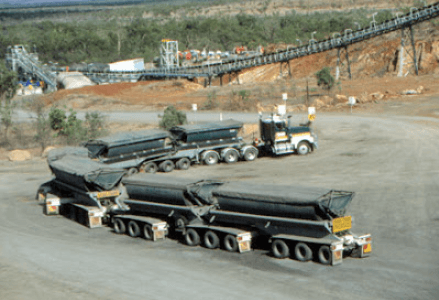
I’m sure they would like a tractor-trailer setup that is one hundred times longer and heavier than what they have there. Unfortunately, there are serious practical limitations to the length of our road train. If we have very straight roads in rural Australia, this might make sense. If we’re talking about normal roads everywhere else, often a semi-truck is too large even as is.

The video below shows the extra space that tractor-trailers often need to turn as compared to automobiles. This space is occasionally simply not there, requiring everyone else to wait for us.
This problem wouldn’t exist if we built them their own infrastructure like we do with trains. However, the advantage is precisely that. We don’t need to build them their special infrastructure in the first place, with the exception of loading bays. They can use the much cheaper road infrastructure, and they can make direct trips from warehouse to warehouse.
Even the road trains pale in comparison to the size of real trains. The extreme length of modern trains is considered a bad thing, and is part of the Precision Scheduled Derailment semi-scam which is gripping the industry due to (((Wall Street)) pressure. But even without that, a locomotive by itself weighs around 300,000 lbs, or about 150 tons. A mile long train will weigh many tens of thousands of tons.
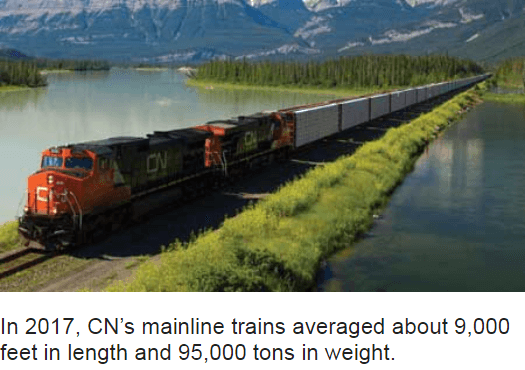
Trains can keep adding cars safely (within reason) since all the cars pass through the exact same path as the locomotive. No one has to worry about the ones in the back pivoting on the rear axles like a semi-trailer and really messing up your day. Theoretically you could install rear wheel turning for trucks and make them much longer, but that has many practical limitations, which is why I’ve never seen it done in person.
Above is an example of what I’m talking about with the rear axle pivoting. Poor guy misjudged the turn, and his trailer got gashed.
Below we have another example, although the driver and vehicle comes through unscathed. Credit to the driver in the white cab for patiently waiting, and good on the guy for eventually fixing his mistake and making it through. Even with that, an extra two or three feet and he wouldn’t have been able to make it. He’s right at the limits as is.
The same cost and throughput advantages apply to buses, which is why articulated buses exist. This does not make them better than smaller buses if there is no demand. But it does make them more cost effective if their capacity can be saturated.
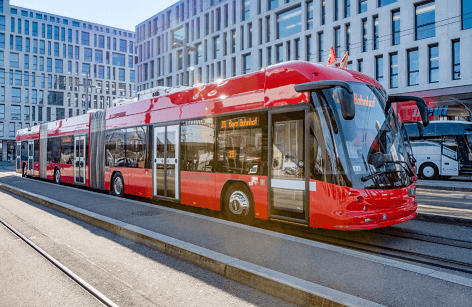
Due to buses and mining trucks running on the general purpose road system, they can only get so large. In order to get bigger, we need fixed path infrastructure, like rails. And that means trains.

Trains are great if we have a consistently large quantify of stuff that we need to move on a regular basis. It’s even better if time is not an issue, since trains aren’t exactly speed demons relative to cargo planes. Luckily, the pile of coal doesn’t mind all that much.

Look at the above breakdown of US freight. See how it’s clearly things that are mass produced and need mass transit? Here’s another US freight train, this time loading up from a series of grain silos. You may notice that they’re bragging about their “high speed loadout,” that takes under 6 hours.
From that video.
We take grain on the inbound side from farmers using semis and straight trucks.
Sshhh. Don’t tell the Traffic Troons. They’ve got the insane idea that those farmers should have their own personal trains to deliver the product to these grain silos because trains == good and trucks == bad.
International markets are – I mean that’s where we go. You have Taiwan, Japan, Korea. You know they’re focused on buying winterwheat from the state of Montana. And rightfully so.
And from the video description.
A client had sent me to the UGC Grain Elevator in Moccasin, Montana to film a shuttle train loading procedure. Here’s a short reel on the process of moving wheat at impressively high volumes and getting a shuttle ready to head out to the Pacific Northwest, where the wheat will be exported to foreign buyers.
It is clear that trains are at an advantage when moving huge quantities of stuff to one specific location. But why couldn’t we simply replace roads with rails, and go everywhere on trains? They have lower rolling resistance, so it’s fuel efficient, right?
Well first of all, that would negate all of the advantage of rail infrastructure, which is that you can have enormously long trains as compared to automobiles, since it is relatively safe to have very long trains. Secondly, it is difficult for trains to turn. They need gentle gradients to travel on one path, and to get onto a new path they need to use switches. Even if this system was automated we would need some hideously complicated system of automated switching to get people from one road to the next, that worked flawlessly every time. This is so unrealistic as to not be worth commenting on.
On top of that anything with steel wheels will be well over an order of magnitude worse at accelerating, stopping, and going up hills than something with rubber air filled wheels, assuming similar design. Watch the video below in 2x speed to see just how slow this BNSF train is to accelerate up a very minor (for automobiles) slope of 2%. Of course this train is pulling a load, but my point stands.
For the jobs they are good at, trains will be more fuel and cost efficient. Since I don’t care about global warming catastrophism and I’m not running the military, I hardly care about the fuel part. I do care about the lower cost of rail transportation, and I very much care about their ability to potentially take many trucks off the roads, improving congestion for everyone. We should all like trains because of the real value that they provide to society, instead of random gibberish about fuel efficiency in artificially constructed scenarios.

And just like I said back in part 16, trains in North America are largely being used exactly how they ought to be. They’re great for huge and simple shipments of freight. They’re great for subway systems. And one of the reasons to hate Precision Scheduled Railroading is that the stripping down train corporation assets by Wall Street is going to lead to more trucks on the road, more congestion for everyone else, and more damage to the roads from heavy trucks.

Anyway, I didn’t want to make this next part its own piece, but I couldn’t let it slip. These Urbanite Bugcreatures are so annoyingly incorrect on so many different things that it takes discipline not to dunk on every little thing that they say. In this case, I couldn’t let it go.

We’ve already seen one blatant homosexual rant about parking garages. That was the guy above, CityNerd, who got really assmad about someone making a “Garage Mahal” pun. Alan Fisher, the lord of the train fetishizing midwits, jumps into the fray attacking the Parking Garages with satire like nonsense.
(1:25) Parking garages are the city equivalent of bad NPC writing in video games. In North America parking garages are generally hailed as a success over conventional surface parking lot, but that’s a lot like saying ‘ah yes, the solid turd is definitely better than the diahrea.’

I keep the scatological comments to a minimum on this site, because it’s gross. I’ve never understood the impulse to do otherwise.
Yes, it’s definitely a correct statement, but if that’s your vision of the future it’s lazy and incredibly carbrained.

CarBraInS
I’ve said what needs to be said here. I’ll just include a commenter pointing out the obvious.
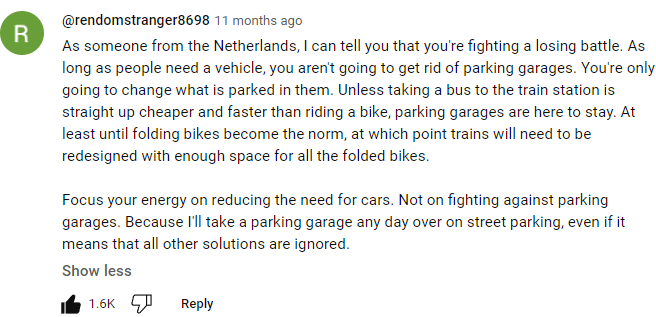
Oh but you see Alan Fisher knows better. He’s already salivating over what we can build after tearing down the parking garages.
See this parking garage under this apartment building? All of that space where the parking garage is, you could just build more apartments. Or maybe put offices there. Or maybe put a grocery store. You could put anything there!
You see this electrical power plant? See how I can’t buy an organic dildo there? Or have a gay fuckparty with my rentboys?

You could tear this down and replace it with apartments. Or maybe put offices there. Or maybe put a grocery store. You could put anything there! All you need to do is not have essential infrastructure and imagine the possibilities!
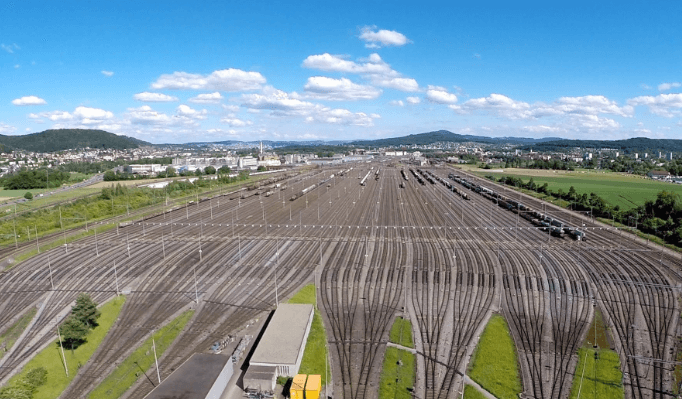
And look at this hump yard above. Does that look nice to you? Of course not! Think about how we could just strip that out and replace it with a highrise full of organic dildo shops. And not just one, an entire block of highrises full of diverse AIDS treatment facilities and other community building enterprises.

TrAiN INfrAsTrUctUrE iS iNEfFiCiENt.
If you build everything close together and have all amenities accessible via walking and biking, why even need an area to park a car in the first place?
That’s a good point Alan. If there is literally no reason to have a car, then there is literally no reason to have a car. GENIUS! Maybe, after we’ve magically made it so that no one ever has any trips beyond biking distance we can then also magically make all their possible trips within biking distance, so they can skip the bike. Then we can magically make it so all their trips take place within their room, so they never have to go outside.

Actually, Alan Fisher is such a fucking moron I can’t let this slide. We saw in an earlier piece that about 15% of city surface area is taken up by parking lots, depending on the city. If we magically got rid of literally all of that and build stuff in their spots, whether that be apartments or grocery stores or whatever, it would mean that, on average, you still have to travel 85% as far to get things as you previously did. So unless literally every single car trip people make is just right there on the cusp of bikeability, and shaving 15% off their trip would solve the problem, then no, this doesn’t remove the necessity of having a car, it just makes everyone’s lives miserable.
And even that is a massive simplification, since some trips require cars for weight carrying, are out of the city, or are to specific destinations that can’t be moved. And even if most of your trips could be within walking distance, if some of them aren’t you need automobile transportation. The point is that even the most cursory glance at reality debunks this absolute garbage.
Oh but now you’re gonna say ‘what about the people that need to park somewhere for their jobs’. Well, if you build enough housing people can just live close to their jobs, and just walk and bike. I know, crazy concept.

Once again, it’s not like parking lots are 90% of cities. If you have to drive for your job, getting rid of parking doesn’t help. People already try living near where they work, but it’s not always possible to find an apartment building within walking distance of your job site, and that assumes you have the kind of job where you always work out of the same location.
It’s like this moron is playing Sim City, and thinks that there is just JOB BUILDING, and any Sim can just go work there, instead of the very specific location that a real person needs to go to do their actual job that their specific skills qualify them for. Therefore, if you just build enough JOB BUILDING next to the right number of HOUSE BUILDING the Sims never have to travel across the city in search of a free JOB BUILDING.
Or maybe your job is in the same building because the developer was smart enough to build an apartment building and office building combo. Ah yes, my commute is from the 11th floor to the 2nd floor. Such a long and arduous commute.

Alan, what percentage of people do you think are going to get jobs in the exact same apartment building that they live in? I don’t want to try working this out for you, give me the percentage buddy. Is it 0.001%? Could it maybe be 0.01%? What percentage do we need to have to break even now that we’ve taken everyone’s parking spots?
Oh and also, this is just for jobs, not shopping. Furthermore, are families going to be allowed to live together now, or are they going to be shipped off to the part of the city that they work in and forced to live there? Please respond, I want a hyperintelligent genius to explain all this to me in detail.
Cars really do suck and no, electric cars and autonomous bullshit ain’t gonna save us. I have an entire video on the topic here.
Cool, let’s check that one out.
It feels like car infrastructure is almost suicidal. No other piece of transit infrastructure can destroy itself faster than cars can destroy their own. You wonder why roads are so bad with potholes. Well, it’s just because in general cars are bad.
Nothing holocausts infrastructure quite like cars. My goodness, is there any alternative?
Now you ask, well what’s the alternative?

Alan, you read my mind!
Well, besides building walkable and bikeable towns, there is a savior that solves all these problems.

Please Alan. Please tell me what this savior is! My trans-vagina is dripping with anticipation. Also puss.
It’s trains.
Trains?

Isn’t that the thing where the infrastructure it needs can be totally destroyed by a bit of sun, since the metal rails expand in heat and contract during the cold. Are we sure they don’t destroy their infrastructure faster than cars? Do we have any source that explains this claim, Mr. Fisher?

He lists six sources, one of which is CSX again (lol). I clicked on all of them and read through them all and no, none of them provide any evidence for the claim that automobiles destroy their own infrastructure faster than any other kind of infrastructure. Also, this claim doesn’t even make any sense anyway. What kind of units would we use? Are we talking time between maintenance? Are we talking max tonnage shipped before maintenance? Cost per mile per year? Well, we don’t know, and he doesn’t either, because he pulled this claim out of his ass.
Back to his parking garage video and he makes a very similar claim.
Speaking of terrible car things, parking garages, like all car infrastructure, is suicidal. Parking garages love to destroy themselves faster than any other type of building. Water intrusion, the freeze-thaw cycle, sea air, and road salt absolutely wreak havoc on reinforced concrete.
Parking garages destroying themselves faster than all other types of building is an extreme claim. Reinforced concrete tends to last a very long time. But this is an Urbanite Bugcreature. I’m sure he’s absolutely loaded up with sources for this claim.
Here are a few fun images of all the crumbling and falling apart parking garages that aren’t even that old.

I sort of expected more evidence than a “few fun images” of parking garages that are clearly still structurally sound. Alan Fisher assures me that these parking garages “aren’t even that old.” Because why quantify something when you can use vague, non-descript language instead?

Well, it’s a moot point. I’m sure that he’s got plenty of sources in the description of the video. I’ll just head on over –

He has literally no sources listed for this video. Absolutely none at all. I went out and searched for “durability of concrete,” and this was one of the first things that I found.
For many projects like building structures and homes, the concrete used is expected to last about thirty to hundred years, depending on the installation methods and construction style.
Let’s check in on those rails again. They appear to be lasting forever.
Fisher goes on to whine about so-called NIMBY’s. Then his video mercifully ends.

Tune in next time as we deboonk the utterly fact-free myth that suburbia is totally unsustainable because of BAD LOGIC and INSANE NON-SEQUITURS. It’ll be a big change of pace from talking about transportation, but will be a lot of fun.

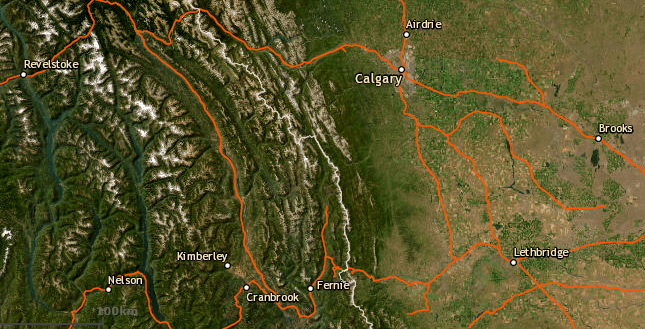



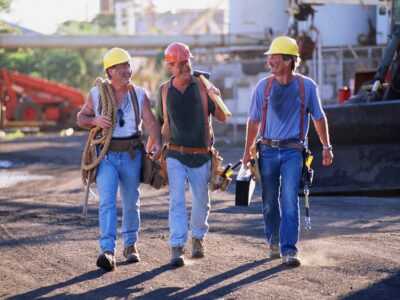








Senpai noticed me
Thanks for the shout out. I was going to mention that the numbers I used weren’t 100% but a guestimation. Trolling these urbanist retards with planes is a fun tactic.
Another way planes are better than trains is their safety record. Aviation is about three or four times safer than rail per billion miles traveled.
https://www.washingtonpost.com/news/wonk/wp/2015/05/14/the-safest-and-deadliest-ways-to-travel/
Please don’t end this series, it has been a blast.
Besides, a take down of this cope is also warranted.
https://youtu.be/y9KNax1QpD4
ROAD TRAIN
https://www.youtube.com/watch?v=47JWL6TnXW0